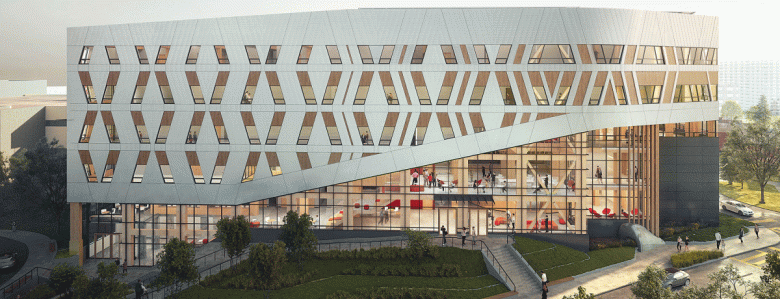Now that I’m spending more time working with schools, I expect I’ll end up writing more often about school related climate solutions. I make no apology for that when it’s a story like this one: Britain’s first biophilic primary school, which opened in December 2023.
St Mary’s Voluntary Catholic Academy, in Derby, was burnt down in an arson attack three years ago. It’s now been rebuilt from the ground up, in what is being described as the country’s greenest school.
Others have made that claim, but certainly this is the first school to use principles of biophilic architecture. Biophilia, if you remember, simply means ‘love of life’ – the human tendency to respond positively to nature. Architects using biophilic principles look to include nature into their buildings – using natural materials, blending indoor and outdoor areas, using natural light and ventilation, and incorporating plants and wildlife where possible.
Biophilic buildings aren’t just attractive and better for the environment. They’re proven to be better for the occupants and users – they’re good for our mental health. So what does this look like in a primary school?
The layout of the building is important. Instead of a big block, the schools has wings for different age groups, all single story and connected by walkways. This layout allows natural light into every classroom, with views into green space from all the windows. All classrooms have doors opening straight outside, encouraging teachers to take learning into the many different outdoor education spaces.

Among those outdoor spaces are rain gardens and meadow areas, forest school areas and a memorial garden. 96 trees have been planted around the site. These are still young, and you’ll have to use your imagination to fast forward in time to see what the image above might look like once the plants and trees are established and leafy.
The hope is that integrating access to nature and views of nature into the building will deliver the same kind of benefits that other biophilic buildings have shown: higher levels of concentration and motivation, and lower levels of stress. A happier place all round.
Beyond the biophilia, it’s a comprehensively greener project. The construction itself was low carbon and much faster than usual, using off-site modular techniques. And it will be net zero in operation, relying on solar PV, heat pumps and plenty of insulation.
Perhaps the best thing about the project is that it’s a pilot from the Department for Education. They are monitoring its performance and how students and teachers respond to the building. If it goes well, this could be a glimpse of what future schools might look like.
- More biophilic buildings:




